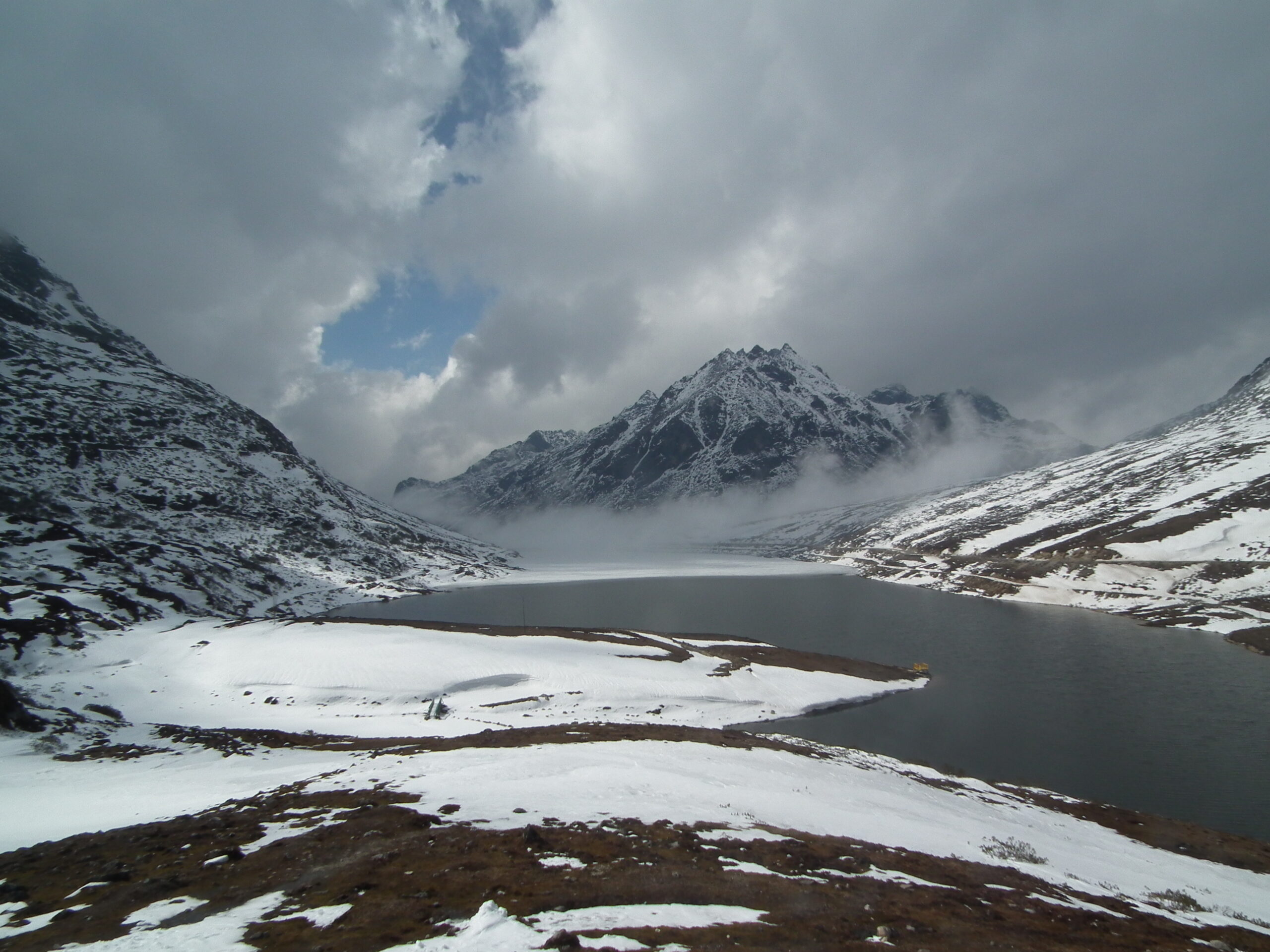India Bucket List: Best Travel Experiences And Places To Visit
Are you looking for bucket list travel experiences in India? Then read on for 39 cool and unique things to do while traveling India.
India is one of the most culturally, linguistically and geographically diverse countries in the world. Being the most populated country on Earth with 1.42 Billion people, it is a melting pot of different religions, communities and food.
This bucket list for India travel comes from my time traveling and living in India. I’ve been lucky enough to experience 18 of these things and can’t wait until I am able to cross them all off my list!

India Travel Bucket List: 39 Unique Travel Experiences in India!
From the mighty Himalayan mountain range that runs along its North and East to pristine beaches along its 7000 km coastline. From the historic forts and palaces of Rajasthan and North India to the modern vibe of Mumbai. From the most luxurious experiences in the world to the largest slums. India has something to engage every traveler’s bucket list.
To make this bucket list easier to digest, it has been organized by Nature, History & Culture, Food, and Everything Else. Check out the sections that interest you the most!
Nature Bucket List Travel
The first 13 items on this bucket list are best for nature lovers. From the snow-capped peaks of the Himalayas to the lush backwaters of Kerala to wildlife encounters, India’s natural diversity is truly something special.
1. Visit Ladakh – The highest mountain desert in the world
Ladakh forms the northern most part of India with spectacular high Himalayan desert landscapes that will leave you mesmerized. Ladakh is a dream for the adventure motorist, with many motorcyclists riding all the way from Delhi or Manali.
It is one of the most sparsely populated places anywhere in the world and has a mix of Buddhist Tibetan and Muslim cultures. Its picturesque capital Leh serves as the perfect base for excursions around. Some unmissable places in Ladakh are Pangong Lake, Nubra Valley and Moriri Lake.
You can spend anywhere between a couple of days or a month exploring this majestically beautiful area in the High Himalayas. If you are to trek in the Himalayas, one of the most beautiful hikes in the world is the Zanskar Valley Trek. Keep in mind that you need to account for at least one day to acclimatize, as the average altitude in is 3,500m or 11,482 feet above sea level!

2. Experience monsoonal rains in Cherrapunji – the wettest place on planet Earth
Cherrapunji, in the Himalayan foothills of Meghalaya in Northeast India is a haven for anyone who loves the rains. Cherrapunji and neighbouring Mawsynram exchange spots regularly for receiving the most rainfall in the world and is 50kms from the capital of Meghalaya, Shillong. The drive between Shillong and Cherrapunji or Mawsynram, through the Himalayan foothills is rated amongst the top 5 in the country.
The monsoonal rains turn the entire landscape lush green and make mountainous streams swell, creating giant waterfalls. Monsoons can be experienced in this abode of clouds between May and October with the best time to visit being between July and September.
The area has a rich, indigenous culture to experience and unique natural wonders like the Double Decker Living Root Bridges. Check out our guide to Meghalaya for everything you need to know for a trip to this bucket list destination that should be on every traveler’s list!
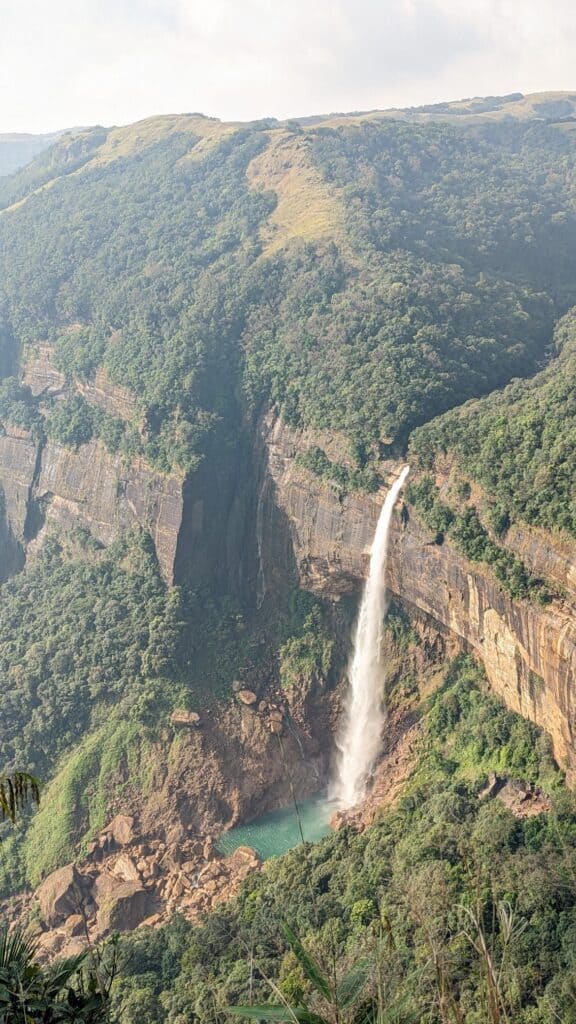
3. Experience God’s Own Country, Kerala
Kerala, lovingly called God’s own country, delivers to that tagline! Kerala has everything – dense forests in Thekkady, spectacular tea plantations in the hills of Munnar, gorgeous backwaters in Alleppey (aka Alapuzha) and the pristine beaches of Kovalam.
Kerala made it to the New York times list of ‘Must Visit Places in 2023‘. Enjoy healing retreats and massages, enchanting hikes through spice / tea plantations and wildlife safaris! Check out our 4 day itinerary for Kerala to help you plan your trip!
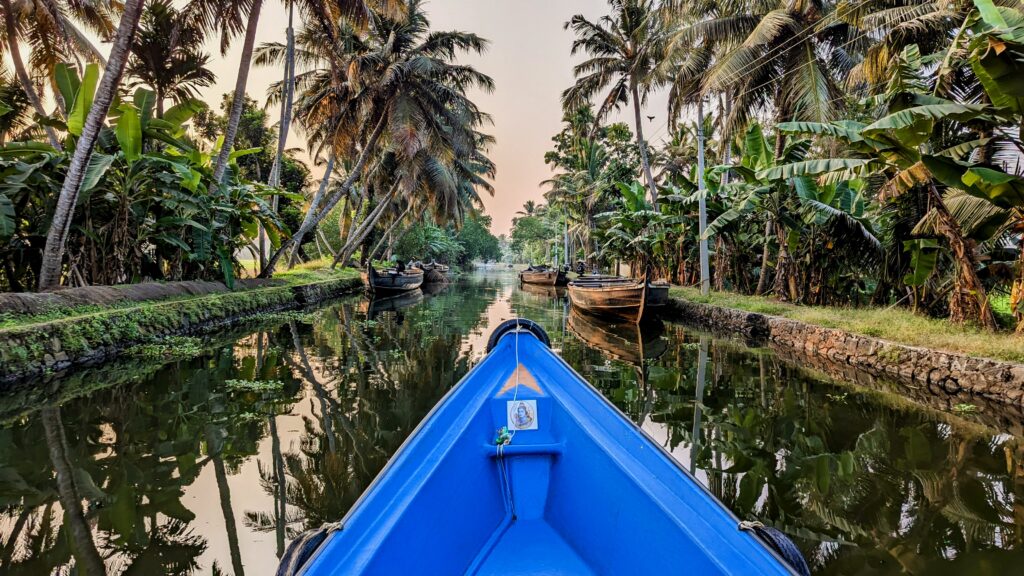
4. Go hiking in the Himalayas
55% of the world’s tallest and largest mountain range, the Himalayas, are in India. The mighty mountains are about 16% of India’s total area and run all along its North and East, naturally isolating the sub continent to create a distinct culture, climate and genetic make up.
The Himalayas are the spiritual center of the country and the best way to experience these mighty mountains is walking! Some of the most iconic hikes in the Himalayas include Spiti Valley, Valley of Flowers trek, Triund trek, Zanskar Valley trek, Brahmatal, and Kedarkantha.
Most hiking in the Indian Himalayas should be through organized tour operators as they involve multiple days of camping through wild forests and indigenous areas with local customs and restrictions. India Hikes is another company that is top notch and has organized treks all across the Himalayas.

5. Go for a tiger safari in one of the many national parks
If there is one thing that only India can deliver as a bucket list experience, it is its tiger safaris! At the beginning of the 20th century, India had over 100,000 tigers which were almost hunted to extinction by the early 2000s, with only about 1,400 left. Numbers have since recovered all across the country and today there are 3,682 tigers in India which is 70% of the wild tiger population in the world!
Watching these magnificent beasts in the wild is an enchanting experience you will never forget! What’s more fun about safaris in India is unlike African safaris which are driven by tracking technology, Indian naturalists rely on pug marks and animal sounds in the forest to track down tigers, leopards and other animals. That makes it much more exciting as you experience the thrill of the chase.
No matter where you are in India, you can find a national park to catch tigers in. Some special national parks include Jim Corbett, Panna, Sunderbans, Bandipur, Kanha, Kabini, Ranthambore, and Kaziranga. Taj Safaris are resorts built by the world famous Taj Hotels within these national parks.
My stay at Taj Pashan Garh in Panna National Park is hands down one of my favorite travel experiences I’ve had.
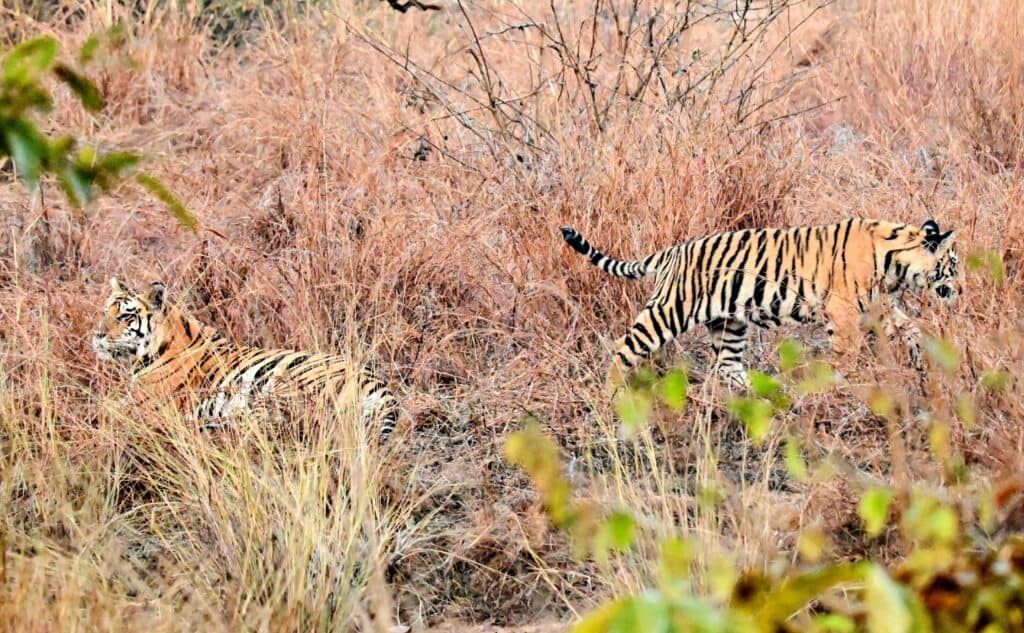
6. Be gobsmacked by the enchanting Spiti valley
Spiti, meaning ‘the middle land’ or the land between Tibet and India is a high altitude region in Northeastern Himachal Pradesh. It has some of the most spectacular drives, vistas and scenery in India. It mostly incorporates the valley of the Spiti river, after which it gets its name. NH 505 from Manali that is the only road in and out of Spiti is one of the most beautiful drives anywhere in the world.
Spiti is one of the least populated places in the country and is an arid high desert ranging in elevation from 2,900 – 4,100 meters (9,500 – 13,450 ft). The region has a language unique to the area called Bhoti and residents here are mostly Tibetan Buddhists.
Some unmissable wonders in Spiti include the Key Monastery, Chandratal Lake, Pin Valley National Park, Surajtal Lake, Kibber Wildlife Sanctuary, and Sarchu.
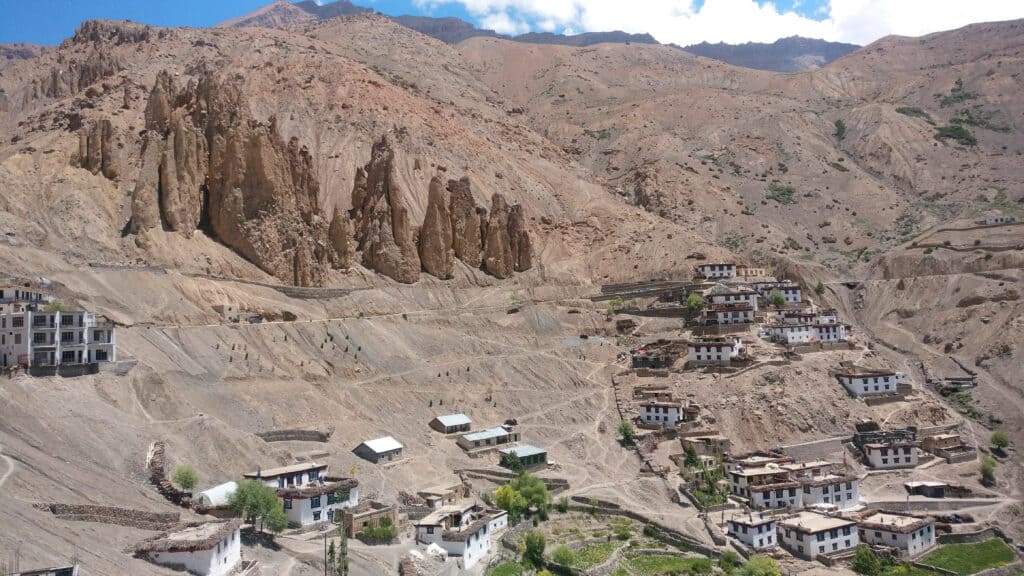
7. Visit the pristine and isolated islands of Andaman or Lakhswadeep
Did you know that India has a archipelago of islands on either side of its vast coast?Andaman & Nicobar islands in the Bay of Bengal in the East is an archipelago of 200 islands with pristine, untouched white sand beaches and islands.
Andaman is home to the Sentinelese tribe on Sentinel island, considered the last untouched tribe in the world. These are the people who first came to India from Africa and in a sense, are the OG Indians. The Sentinal Island though is off limit to tourists. Andaman also has India’s best beaches, thriving coral reefs making it a dream scuba diving destination.
To visit Andaman & Nicobar islands you can fly to Port Blair, its capital from most major Indian cities or take a passenger ferry from Chennai. From there you can ferry over to Havelock (the most popular island in the group) or other islands.
On the opposite side of the country sits the Lakshadweep islands in the Arabian Sea, which is a collection of 36 islands to the West of India. Lakshadweep is even more isolated than the Andaman islands and tourism is just started to grow here. So, if you’re looking for a more offbeat, untouched beach destination, Lakshadweep is for you!
To get to Lakshadweep, you either have to fly to Agatti airport from Cochin or take a 14-18 hour ferry ride from the Cochin port.
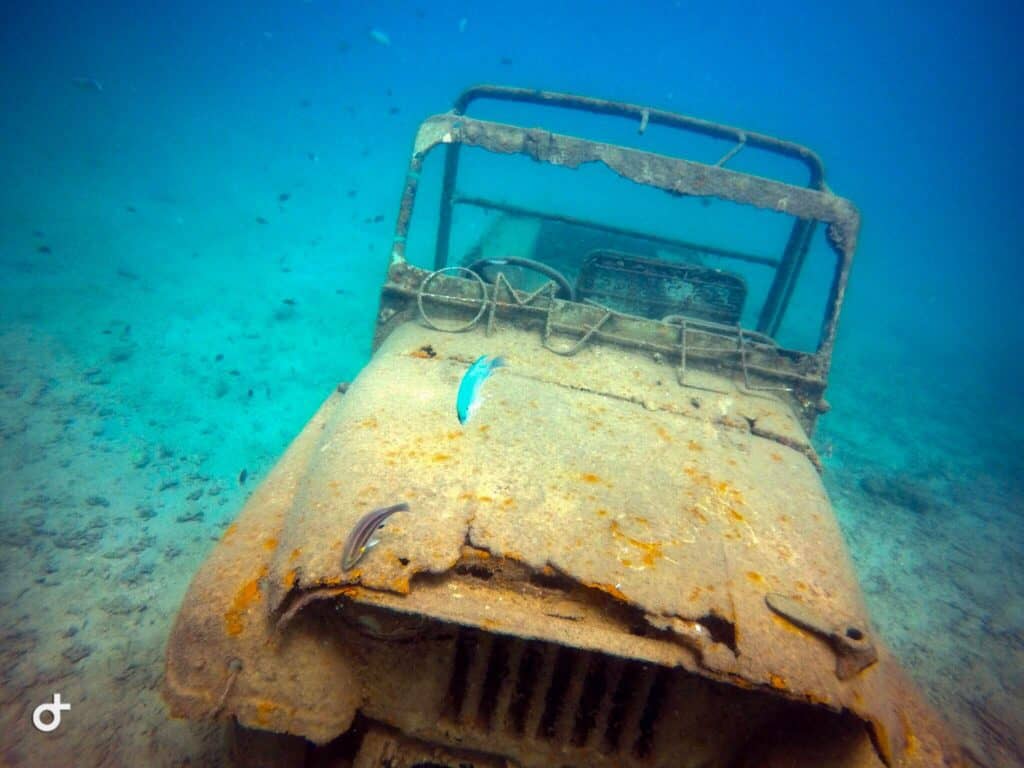
8. Take a shikara (boat) ride on the Dal Lake in Srinagar, Kashmir
The northern Indian region of Kashmir is considered one of the most beautiful places anywhere on the planet. Its capital and largest city, Srinagar is nestled in a high Himalayan valley, surrounded by towering mountain peaks. It is the perfect base for your trip to the area and to experience the unique Kashmiri culture through its food, textiles, and way of life.
Kashmir is great place to shop around for textiles like Pashminas, Cashmere, and Kashmiri rugs, which all make for amazing souvenirs from your bucket list trip to India.
The bucket list thing to do in Srinagar is the taking a boat ride on a shikara or houseboat on the mesmerizing and tranquil Dal Lake. This massive lake surrounded by high peaks on all sides is a sight to behold and an experience you won’t forget in a rush. If you do not want to navigate the booking process at the lake, you can opt for an organized tour.
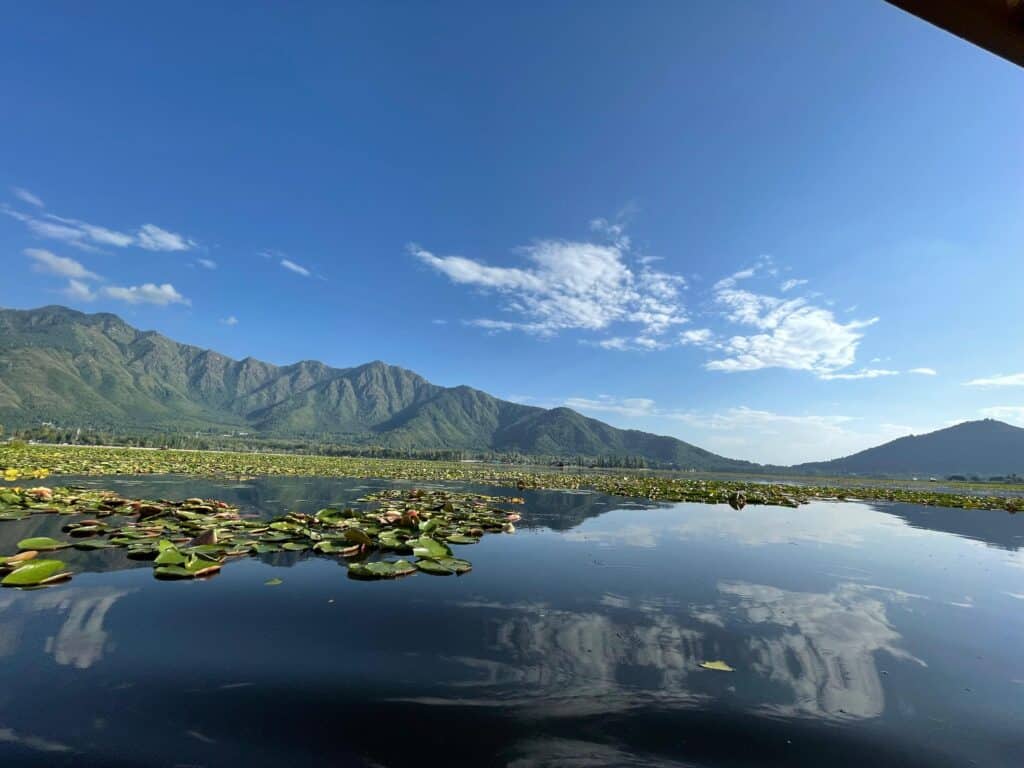
9. Explore the unique nature and geopolitics of India’s Northeast
India’s northeast is a lesser known area of 8 states in India’s northeastern region in the high Eastern and lower Himalayas. It contains some of the most unique biodiversity anywhere in the world – the high passes of Sikkim and Arunachal Pradesh, the fertile plains of Assam around the Brahmaputra river (India’s 2nd largest), the lush wet hills of Meghalaya, the gorgeous Dzuko Valley in Nagaland, Loktak Lake in the Kebul Lamjao National Park in Manipur and many more mesmerizing sights.
It isn’t the most well connected region in the country and each state here has special protections for its numerous tribal communities, many of whom are nature worshippers. This leads to the Northeast having a unique geopolitical relationship with India.
You’d have to generally fly to Guwahati, the largest city in the northeast, and then travel by road from there. Depending on which state you’re looking to visit, you could fly or take a train to Bagdogra / Siliguri to visit Sikkim, Itanagar for Arunachal, Guwahati for Assam and Meghalaya, Imphal for Manipur and Dimapur for Nagaland. If you want help planning a trip to the northeast, you can check out our custom itinerary planning services.
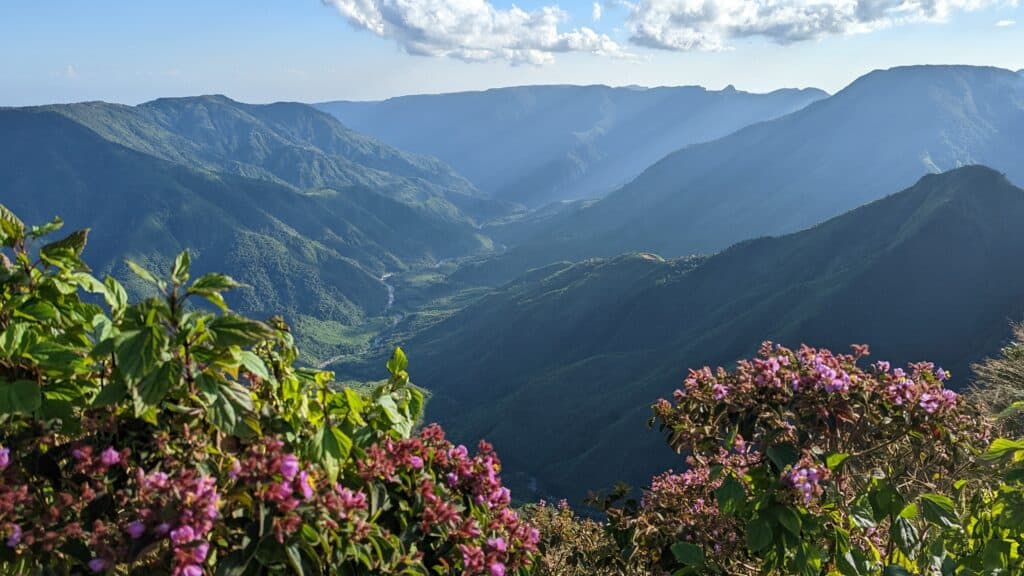
10. Visit Gir National Park – the only place in the world with Asiatic lions
The Gir Forests in Gujarat in Western India are the only place in the world where you can witness Asiatic lions in the wild. At the end of the 19th century, there were only about a dozen Asiatic lions left in India. Today, through conservation efforts, there are about 600 lions in the Gir Forests.
Gir is located about 300kms or ~7hrs away from the state capital, Ahmedabad or about 8 hrs from Vadodara. Here are some recommended tours and wildlife safaris you could book in advance to visit Gir.
11. Discover the pristine beaches of Gokarna
While Goa is extremely popular with both Indian and international tourists, Gokarna is its lesser known cousin, about a 4 hour drive south from Goa in the state of Karnataka. It is my favorite beach destination in India. Because it is lesser known, it is quiet and you could only hike between beaches until a few years ago.
While a bit more developed and having more tourism now, there are many untouched beaches all around Gokarna perfect for an isolated getaway beach vacation. I was fortunate enough to see bioluminescent beaches during my last trip here.
Gokarna must visits include Om Beach, Half Moon Beach and Paradise Beach. You can either hike between these beaches along gorgeous sea cliffs or hire a boat from Om beach.
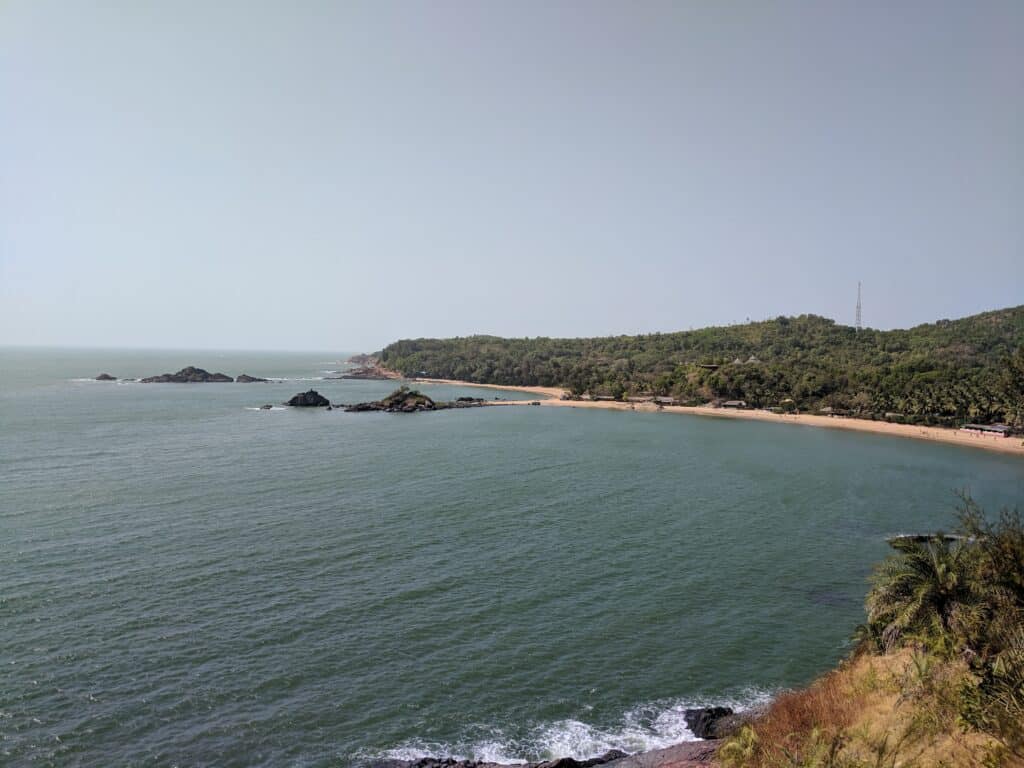
12. Learn yoga and go white water rafting in Rishikesh
Rishikesh, set along the banks of the Ganges in the Himalayan foothills in Uttarakhand, is a center for the spiritual and adventurous traveler in India. Its white sand beaches along the river are perfect to camp along. There are also many temples and yoga / wellness centers along the river or ghats that take you on a spiritual journey.
It has the most famous rafting experience in India, with grade 1 rapids that require you to be with a guide. Thus, you have to book a tour to do that. Be warned that these rapids aren’t for the faint hearted!
13. Witness the beauty of the Western Ghats and its enchanting forests
The Western Ghats, also known as the Sahadris, are a hill range that extend for 1,600 kms along the entire Western Coast of India from Gujarat to Kerala, forming the Western edge of the Deccan plateau that is the most prominent geographical feature of Central and South India. This range was formed when India broke off from Gondwana, the supercontinent that forms 2/3rds of the Earth’s land mass today.
This range with elevation varying between 900 – 2,200 meters ensures the Western Coast of India is one of the wettest places on the planet. It creates rivers like Krishna, Kaveri and Godavari that drain almost 40% of the land mass of India. A UNESCO World Heritage site, the Western Ghats contain 30% of all flora and fauna found in India and is home to 325 endangered species.
This region is mesmerizing in the monsoon months between June – September, offering great opportunities for hikes, enchanting forest walks filled with fireflies and gushing waterfalls and rivers.
Some spots to enjoy the beauty of the Western Ghats include Lonavla, Mahabaleshwar, Bhandardara which are all great day trips from Mumbai. Other spots include Lavasa, Dudhsagar Falls (near Goa), Munnar in Kerala, Kodaikanal and Ooty in Tamil Nadu.
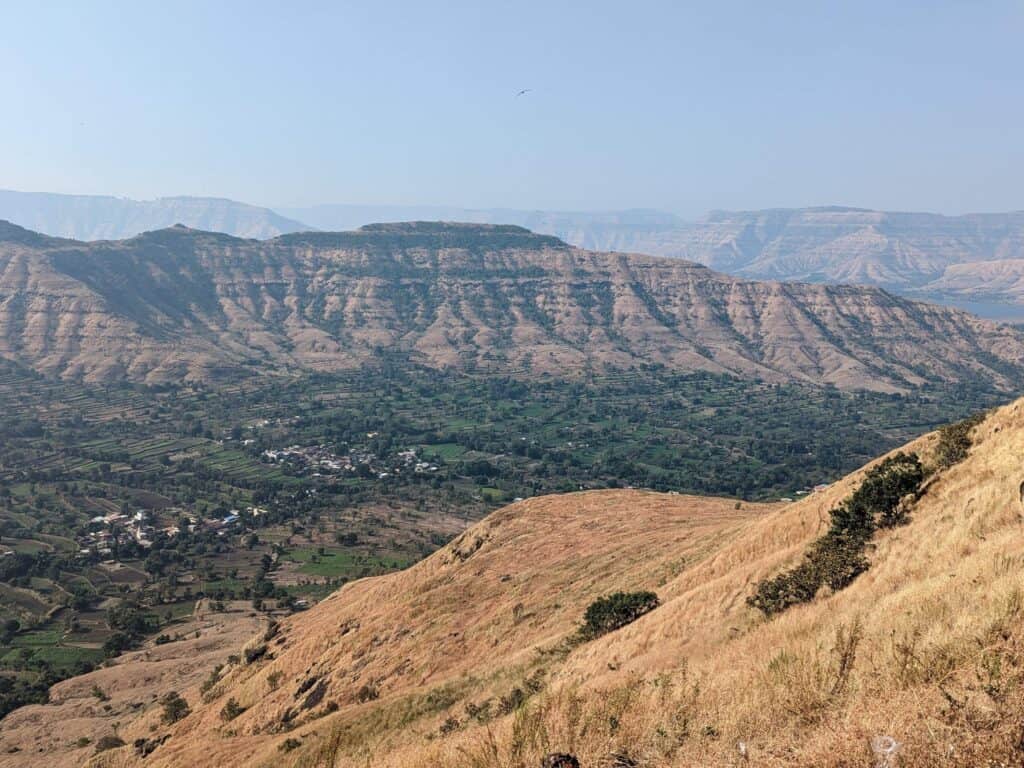
History and Culture Bucket List Travel
India’s cultural heritage isn’t confined to museums and monuments – it’s woven into the fabric of daily life. If you’re a history buff or just interested in learning more about different cultures, you’ll enjoy these 15 bucket list items, from the immortal testament of love that is the Taj Mahal to the ancient ghats of Varanasi.
14. Experience the royalty of Rajasthan
Rajasthan is a key part of the golden triangle travel that is very popular with international travelers. The golden triangle includes Delhi, Agra, and Rajasthan, which is hands down the most recommended of the three.
Rajasthan is the largest state in India by area but 7th largest by population. It used to be a collection of princely states, with its own culture, food and ideologies. The Rajputs are the most famous of the Rajasthani dynasties.
Being such a large state, Rajasthan has everything from the beauty of the Thar Desert in Jaisalmer to the dense forests of Ranthambore or the hills of Mount Abu to imposing hill forts all over the state (like the Mehrangargh Fort), and a spectacular old town set around Lake Pichola in Udaipur. Finally, Jaipur, the pink city is also definitely worth a visit.
Some of my top Rajasthan recommendations include Udaipur Old Town, Mehrangarh Fort in Jodhpur, Hawa Mahal in Jaipur and a desert safari + glamping experience in Jaisalmer.
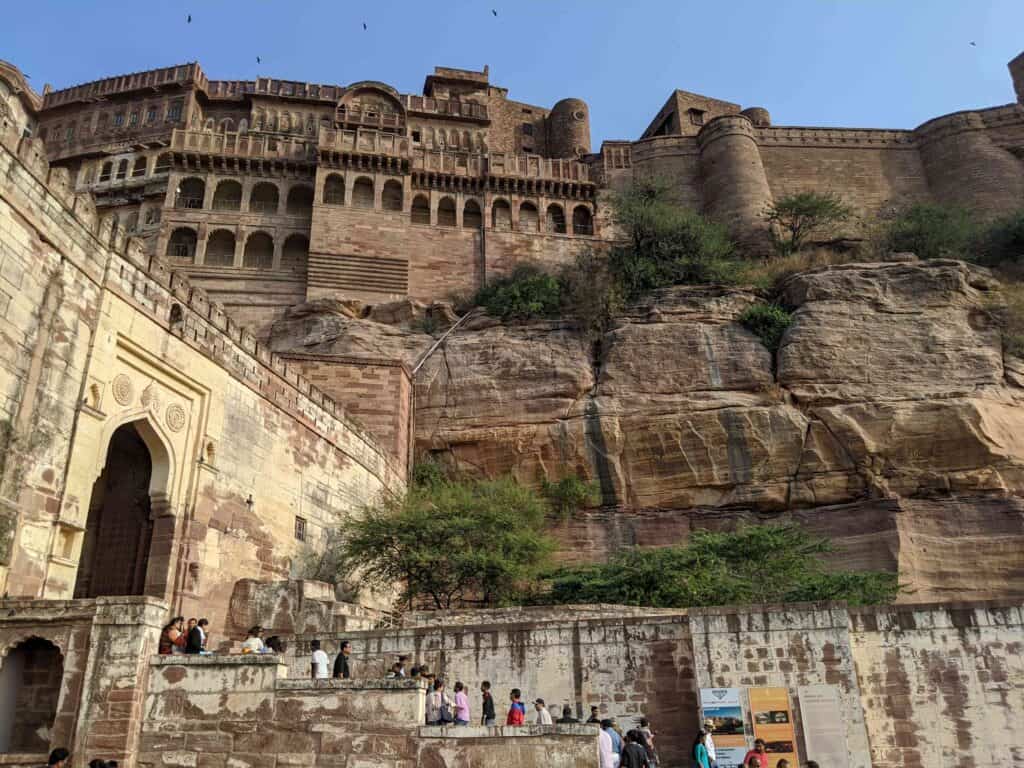
15. Watch the sunrise or sunset at the Taj Mahal in Agra
Taj Mahal is one of the seven wonders of the world, a spectacular 17th Century mausoleum and a bucket list experience for any traveler. Set on the banks of the river Yamuna in Agra, the sunrise or sunset hues make this a spectacular time to wonder at this beautiful monument. Agra can be easily reached from Delhi in <4 hours by train or car making it an easy day trip.
Check out our guide to visiting the Taj complete with information about how to get there, critical, visit info (closed on Fridays), other places in Agra worth visiting and hotel recommendations.
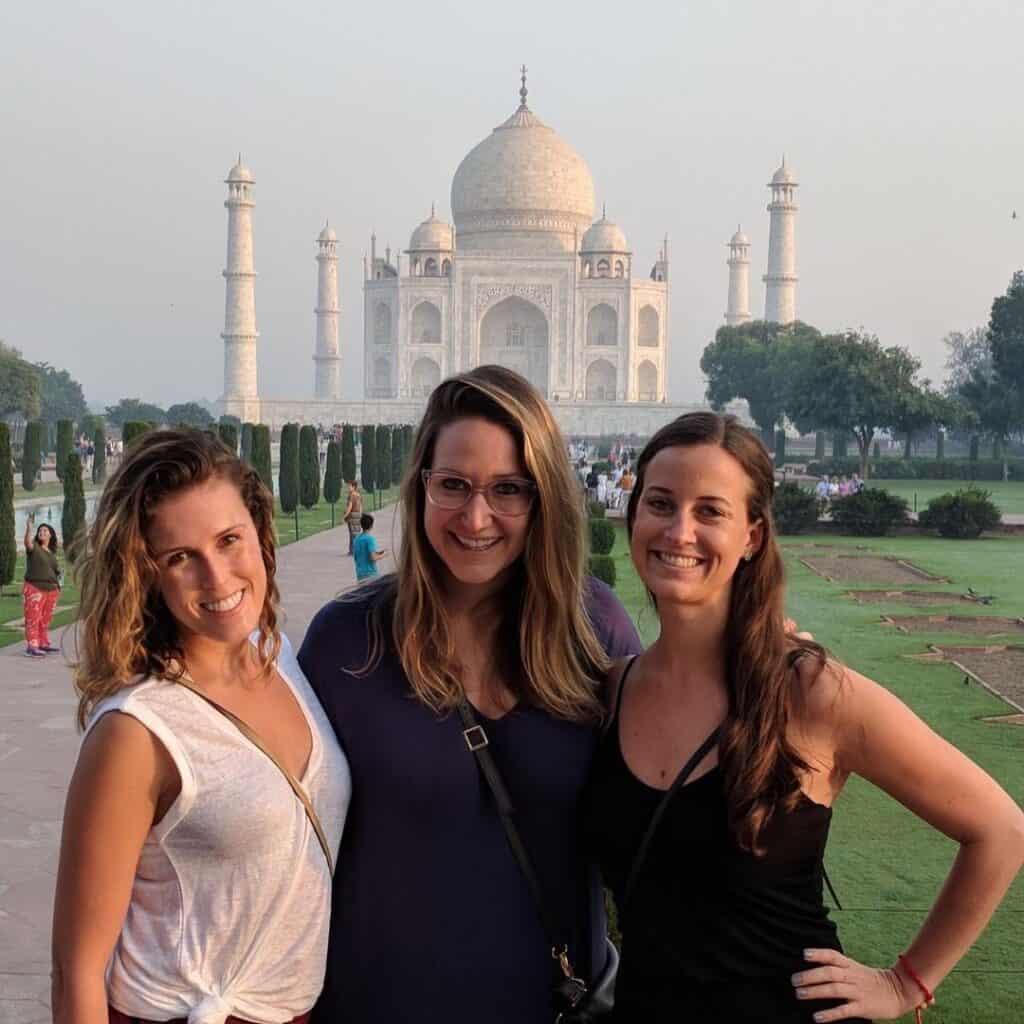
16. Visit 43 UNESCO World Heritage Sites
India is 6th on the list of for countries for number of UNESCO World Heritage Sites, with 35 cultural sites, 7 natural sites and another that is a mixed type.
India has a unique ancient culture constantly being discovered and rediscovered with more research. Evidence of civilization dates back to at least 8,000 BC and it is home to the Indus Valley Civilization, from 3,000 BC. The civilization was bigger than both the Egyptian and Mesopotamian civilizations that overlapped at the time. It is considered that India get its name from the civilization, as the land south of the river Indus in modern day Pakistan.
Top UNSECO world heritage cultural sites in India, according to me would be: Khajuraho Temples, Konark Sun Temple, Taj Mahal, Fatehpur Sikri, Elephanta Caves (a top thing to do in Mumbai) and the 6 Hill Forts of Rajasthan.
Naturally, India broke off from the supercontinent of Pangaea and spent 53 million years as an island. This meant the natural diversity evolved in isolation for millions of years, creating some unique natural wonders, including the Himalayas when the subcontinent crashed into Asia. Top UNSECO world heritage natural sites in India are Kaziranga National Park and Sunderbans National Park.
17. Visit the birthplace of Buddhism in Bodh Gaya, India
While Buddhism is not a major religion in India, its birthplace is the Indian subcontinent. Gautama Buddha was born as a prince in Lumbini in the Terai plains of modern day Nepal. Renouncing worldly pleasures of the kingdom, the Buddha is said to have sat in meditation for years under a tree in Bodh Gaya, eventually attaining enlightenment under it and this being known as the Bodhi tree.
Today, Bodh Gaya and the Mahabodhi Temple complex is one of 4 most important places of pilgrimage in relation to the life of Buddha. You can also visit Kushinagar and Sarnath in Uttar Pradesh, India which are two other important pilgrimage sites. You can opt for convenient organized tours to all these spots.
18. Feel the soul of India in Delhi
Delhi, the national capital, is the largest metropolitan region in the country, with over 33 million people, almost 11 million more than the Mumbai metro region. It has always been the political heart of North India and today serves as the political center of the country. Set on the banks of the river Yamuna and with food to die for, it has a marvelous mix of the ancient and the modern.
It has everything a tourist could want – amazing street food in places like Chandni Chowk, spectacular monuments like Humayun’s Tomb and Qutub Minar, the seat of India’s political power at Rajpath and the Parliament building, beautiful gardens like Lodhi Gardens!
If you’re deciding between the 2 cities of Mumbai and Delhi for your India visit, understand what makes each city unique: Mumbai vs. Delhi: Which Indian City Is Better To Visit?
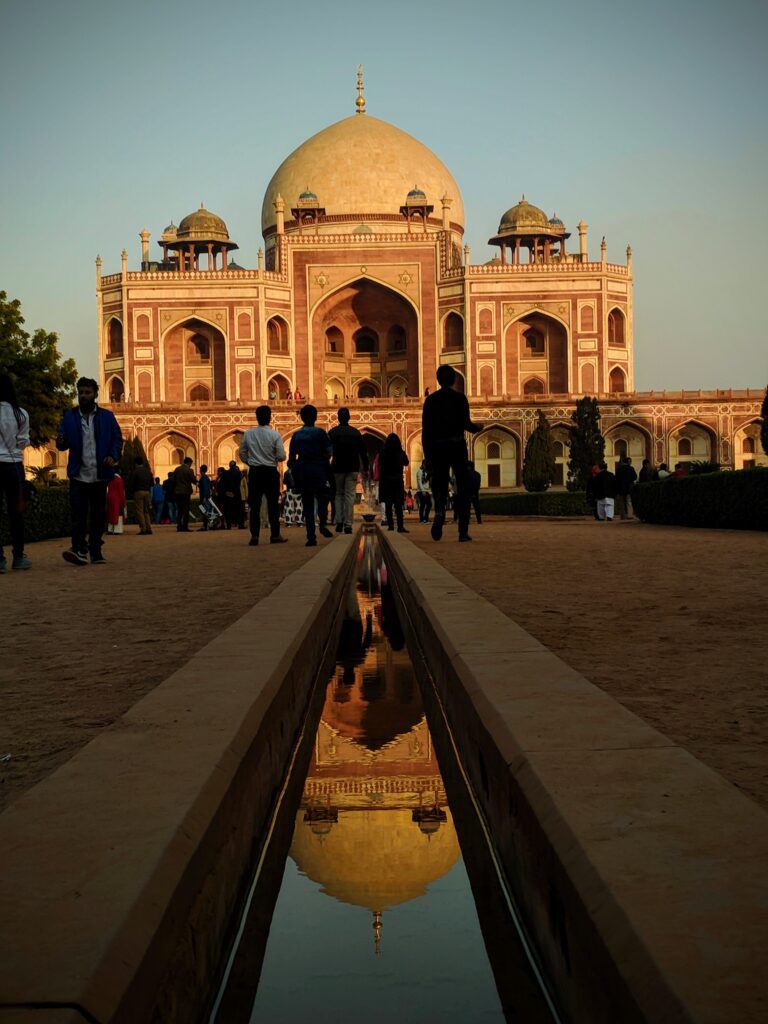
19. Chill out in Goa
A haven for hippy culture through the 70s, 80s and 90s, Goa retains its old world charm while embracing everything that comes with being a commercial, international beach destination. Goa has exploded since a few decades ago, with its tourist hub emerging on the beaches of Baga and Candolim.
However, today, you have the choice of basically choosing between destinations all across this thin, state that stretches for about 110 kms along the Western coast of India. We have detailed guides to help you choose between North & South Goa depending on the type of trip you’re planning, understand which airport to fly into and chill at the best beach shacks in Goa.
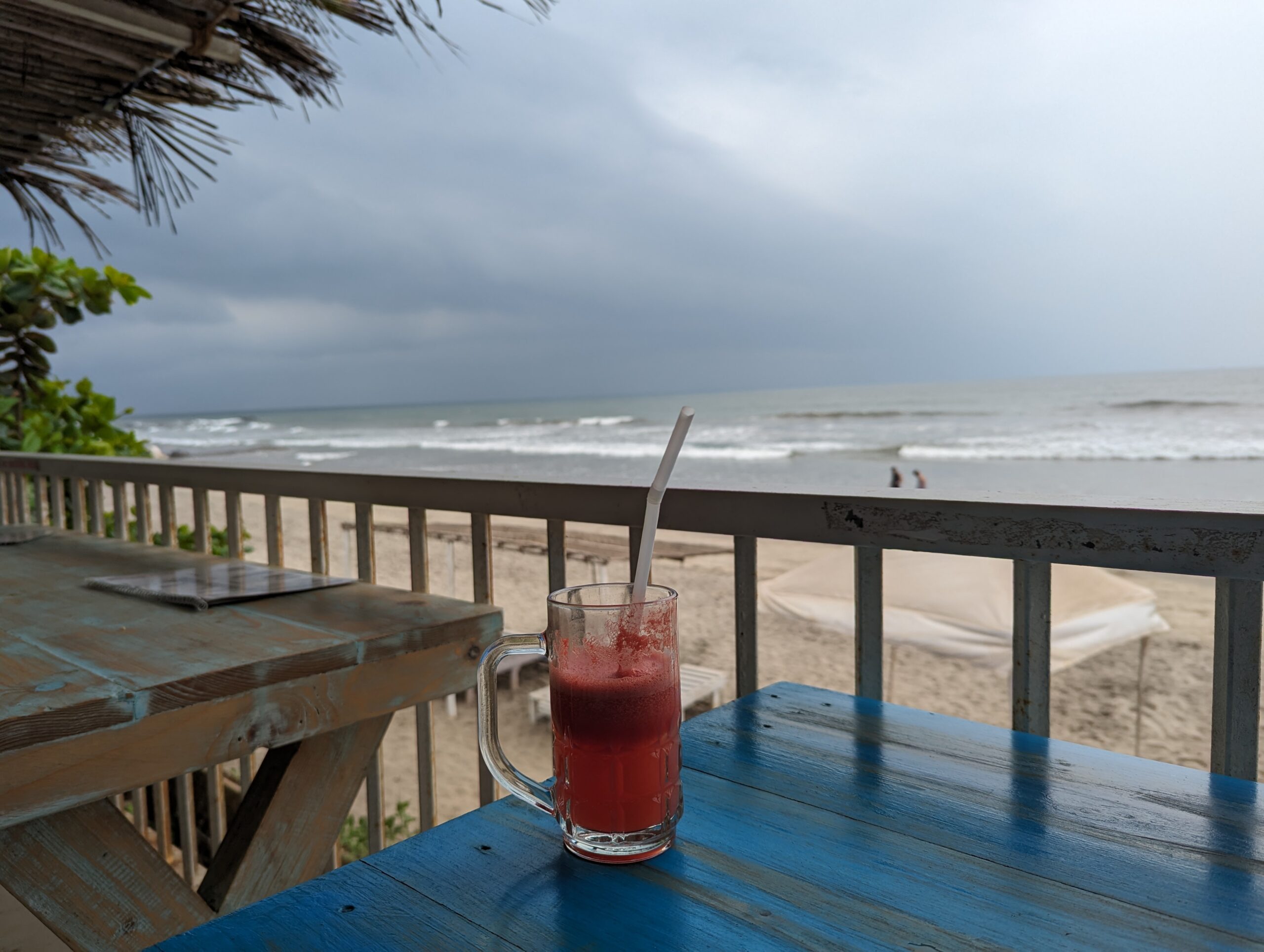
20. Visit historic temples to immerse yourself in India’s ancient culture
India is an ancient land with cross cultural exchanges happening for at least over 7,000 years. It is the land of ancient temples. India has over a 1000 temples with many being over a 1000 years old. We would recommend taking tours from the nearest major city to get to these temples.
Here are some of the most famous ancient temples worth visiting in India with tours:
- The Kailasa temple in the Ajanta-Ellora cave complex in Aurangabad, Maharashtra which is the largest structure anywhere in the world carved out of a single piece of rock is 1,300 years old.
- The Shore Temple in Mahabalipuram, Tamil Nadu
- Sun Temple, Konark, Orissa
- The Khajuraho Temples in Khajuraho, Madhya Pradesh which are famous for the Kamasutra sculptures
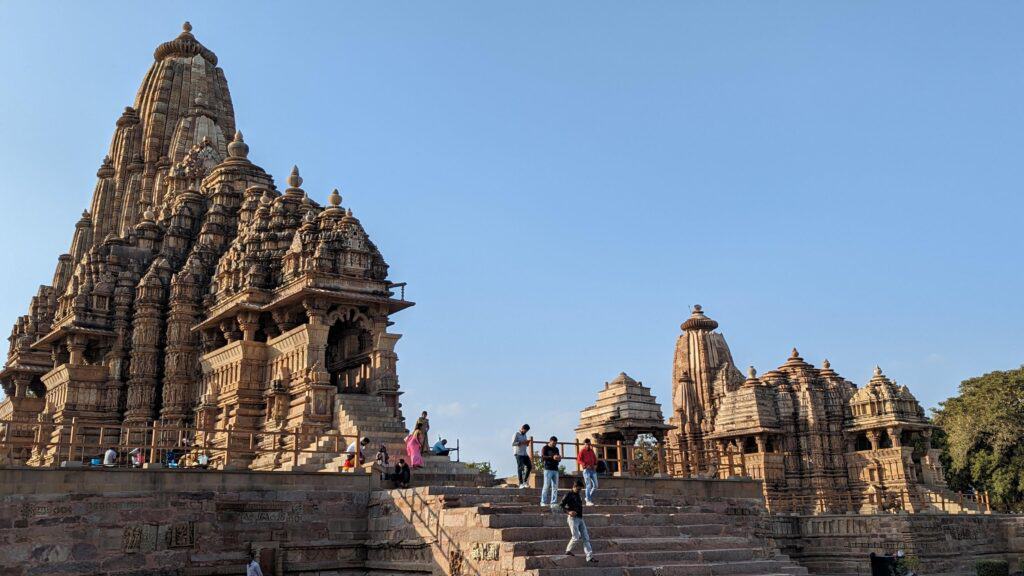
21. Experience the diversity and thumping heart of modern India in Mumbai
Mumbai is home to the financial sector and the Bollywood film industry. The city serves as India’s financial and entertainment capital – a melting pot that is both the New York and LA of India. It is a land of juxtapositions – of obscene riches and radical poverty, of dreams of Bollywood and nightmares of survival, of love and hate the citizens of this metropolis find in its peace and chaos, of the sea crashing into the maze of Mumbai itself.
A city I called home for a year, it is known for its fast-paced life and scenic coast, Mumbai is the thumping heart of modern India – it’s largest, most diverse city, with over 21 million people within city limits and an equal number in its outskirts. As an international traveler, you’ll feel that the buzz of Mumbai is unlike anywhere else.
We have you covered with everything you may need to know about Mumbai – getting a sim card at the airport, its street food, where you could walk around in the city, trekking and roadtrips around it!
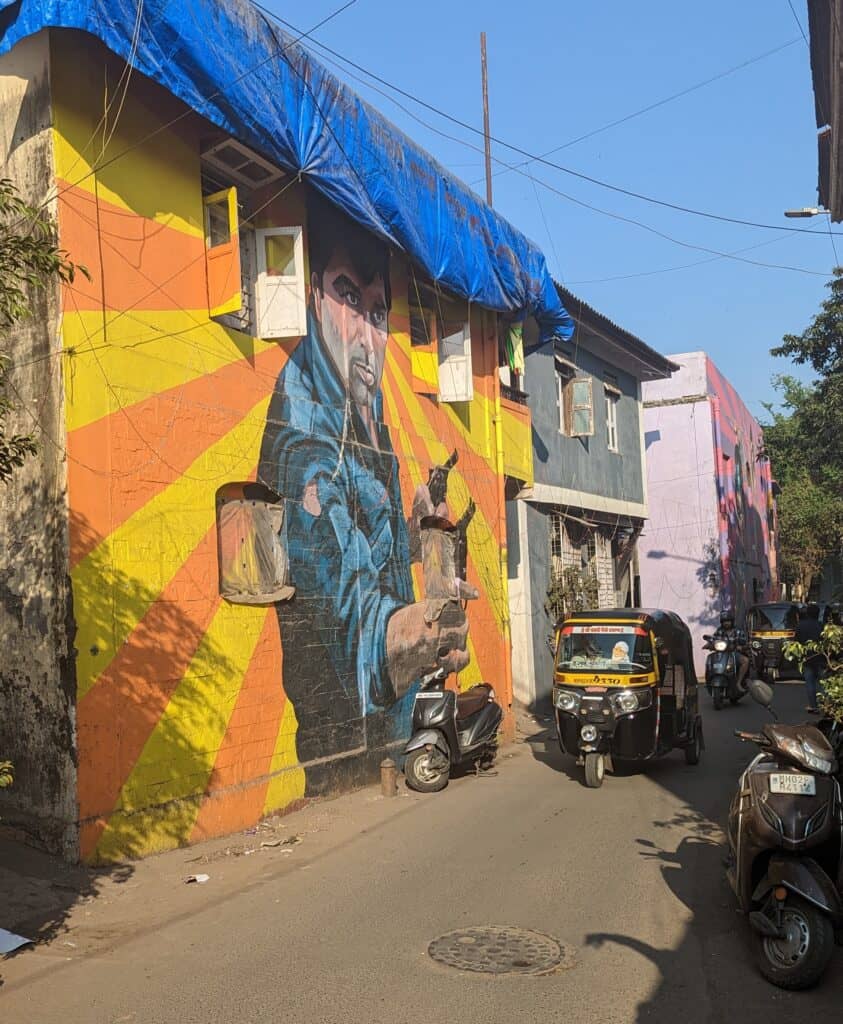
22. Check out the unique architecture of Pondicherry
Did you know that India wasn’t just colonized by the British? While the British colonized most of India and became a superpower through that, the first colonizers to reach India were the Portuguese. The Dutch and the French also controlled small parts of the country. The French sphere of influence stretched all across India Southeast coast and parts of modern day Telangana and Andhra Pradesh.
Pondicherry or Puducherry though remained the seat of French power in India, a small town about 100kms from Chennai on the Eastern coast of Tamil Nadu. It still retains a charming old town complete with French architecture, making it a unique bucket list experience in India.
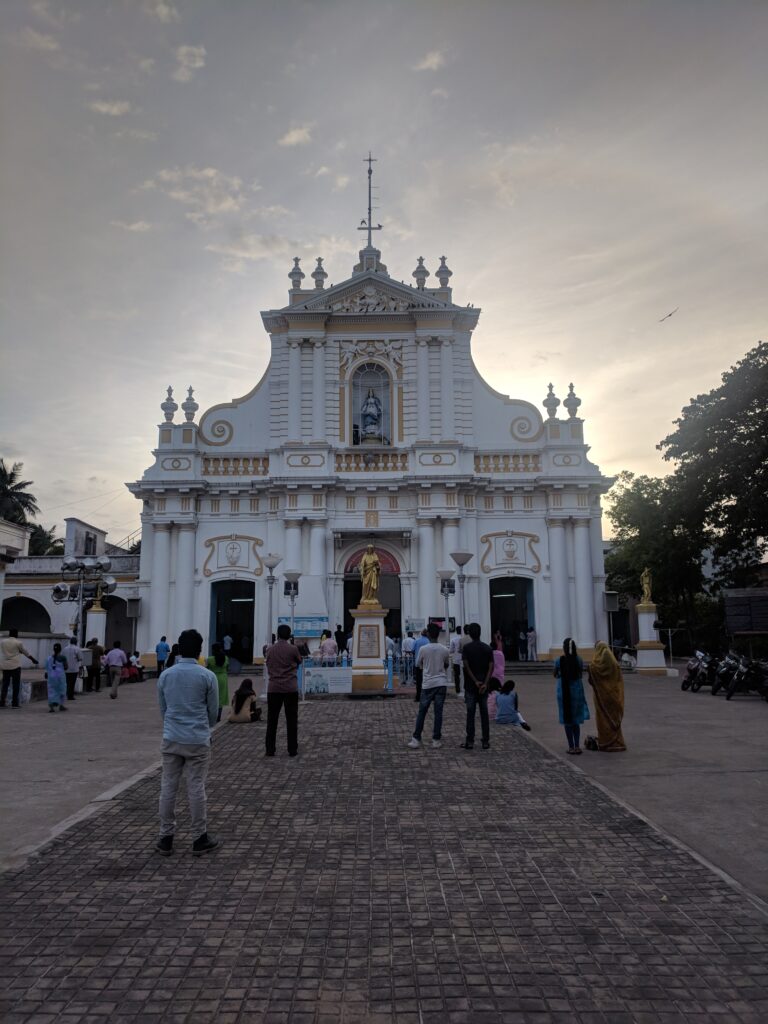
23. Watch aarti on the banks of the Ganges in Varanasi
Varanasi or formerly Banaras is the spiritual heart of the Hindu religion. Set by the banks of the mighty Ganges river in the state of Uttar Pradesh, it has the grandest temples along the ghat (riverside) anywhere in India. It also has a beautiful old town.
Every tourist in Varanasi must witness the spiritual experience of an aarti, which means ‘to wave lights’, by the Ganges every evening. Aarti is a Hindu ritual used during prayers or puja. It is completely free! Just take a seat on the steps by the river between 5:30 – 6:00pm for the aarti that begins at 6:30pm.
24. Meet the Dalai Lama and experience Tibetan culture in the Himalayas
Did you know that the unofficial capital of Tibet is considered to be Mcleodganj, which has been the home of the Dalai Lama since he escape from Tibet in 1959 to evade Chinese capture. There are over 100,000 Tibetan refugees spread across the Indian Himalayas, with about 10,000 in Mcleodganj, a beautiful town in Himachal Pradesh.
In addition to visiting Namgyal Monestary or the Dalai Lama temple, you should enjoy Tibetan momos, thukpa and many other aspects of Tibetan culture. To get to Mcleodganj, you can fly to Dharamsala or take an overnight bus from Delhi or Chandigarh.
India offers other extremely picturesque places too with a deep Tibetan influence and revered monasteries – Tawang in Arunachal, Key Gompa in Spiti, Thiksey in Ladakh to name a few.
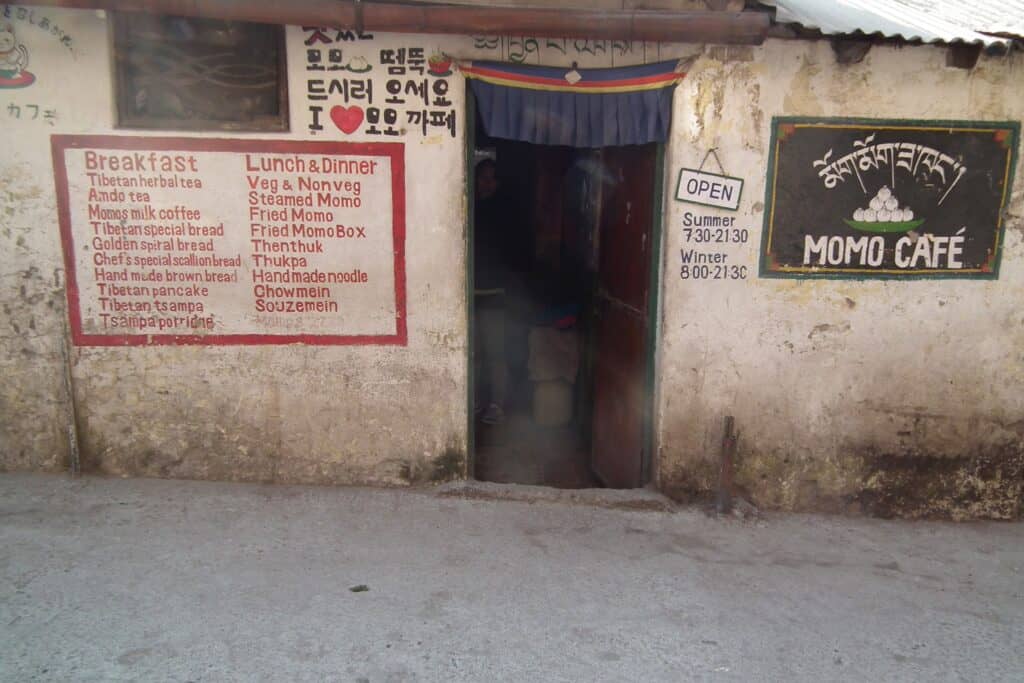
25. Celebrate Holi, the festival of colors
Holi, usually in March every year, brings an explosion of color throughout the Indian subcontinent. It is based in Hindu mythology and is a festival that represents the victory of good over evil. A lesser known fact about Holi is that it is also celebrated the night before by lighting a bonfire and prayers. The next day entails Holi parties where people smear each other with colored powder and water, usually made from sandalwood and rose leaves.
In addition, people also drink a milk based drink, which can be infused with the ‘good green stuff’ called bhang or without it, called thandai. Make sure you understand which one you’re drinking! 🙂
Holi is best experienced in Northern India and some top sites include all of Rajasthan; Vrindavan, Mathura, Varanasi in Uttar Pradesh and the Holi parties of Delhi or Mumbai. However, you will experience the festival no matter where you are in India.
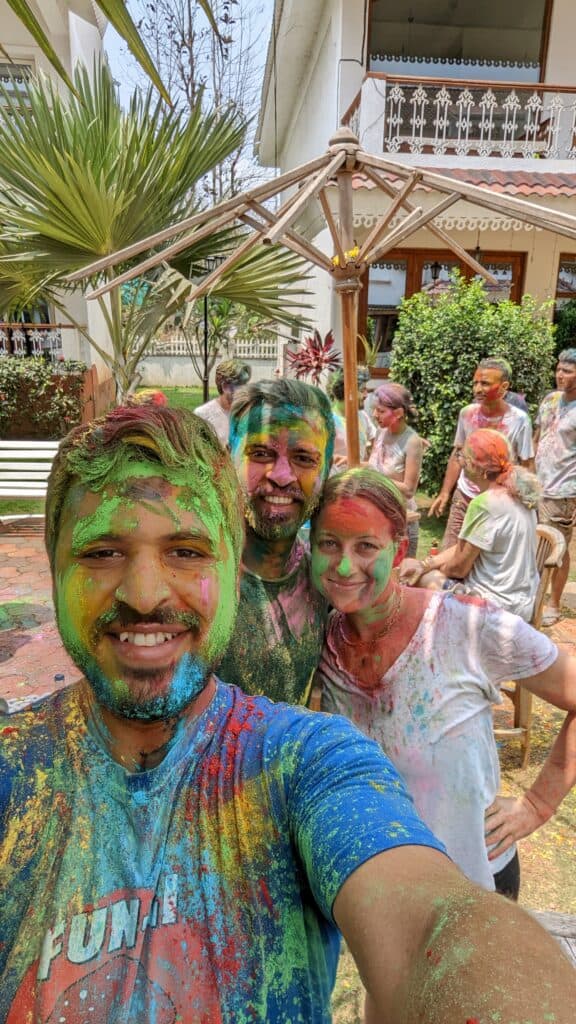
26. Experience Diwali, the festival of lights
Diwali, simply put is India’s Christmas. The festival of lights brings a joyous wave across the country every year, as it marks the beginning of winter and cooler temperatures.
Diwali, which celebrates the homecoming of Lord Rama, is celebrated across the country, regardless of faith and is symbolic of the victory of good over evil. People decorate their houses with beautiful lights and earthen clay lamps (diyas). There are many Diwali parties where people come together to celebrate with sumptuous food, sweets, games, music, and fireworks.
While anywhere in India is a great spot to experience this magical festival, places like Rajasthan, Varanasi, Delhi and Mumbai will give you a variety of options to choose your Diwali celebration!
27. Participate in tribal festivals and communities
India is probably the most diverse large country in the world. It has a population of 80% Hindus but also has the 2nd largest Muslim population in the world. Additionally, it is a vast country with many different tribal communities and cultures within it. These can be eye opening for a Westerner who usually associates India with the palaces and food of North India.
If you are the kind of traveler who is attracted to learning more about isolated, tribal cultures, India offers many destinations. Head to India’s northeast during festivals like the Hornbill festival in Nagaland every December, Bihu in Assam in April, the Nongkrem Dance in Meghalaya in November.
The Sindhu Darshan in Ladakh is a 3 day festival held in June where local artists from all over the country perform and bring water from their own states to commemorate the Indus river. This is a unique travel experience in India which can give you an India of the diversity of India.
28. Go to an Indian wedding
It is true what they say about Indian weddings! They are a lot but they are also a lot of fun. These multiple day affairs are a unique window into India’s culture and love for a celebration. Often with thousands of guests and events catered to all demographics of guests, an Indian wedding is usually the biggest party around. Given the religious and regional diversity in India, no two Indian weddings are the same!
If you are fortunate enough to be invited to an Indian wedding, I’d totally recommend going. Believe it or not, there are also tours and experiences built around Indian weddings. While that is not the most personal experience, it could still give you a glimpse of what it is like to attend one.
I actually met my husband, Anmol, at an Indian wedding in Bangalore in 2017. Little did I know then that we’d have an Indian wedding of our own in 2024. 🙂
Food Bucket List Travel
Each state, city, and even neighborhood has its own culinary secrets, passed down through generations. From street food adventures to royal feasts, India’s gastronomic landscape is a journey in itself.
29. Go on a gastronomical journey like no other in this vast country
No matter what part of the country you visit, you are guaranteed a unique, gastronomical journey you will remember for the rest of your life. What many Westerners think of as ‘Indian’ food is generally a small subset of North Indian food.
In truth, food in this vast, diverse country changes every few hundred kilometers. As a foodie, there is much to be excited about – the parathas of Delhi, the chaat of Bombay, the dosas of South India, the Malabar cuisine of Kerala and so much more.
Check out our guide to food in Delhi vs. Mumbai. If you’re looking for recommendations in Mumbai, check out our guide to Mumbai street food, the best restaurants in South Mumbai and Parsi cafes.
30. Eat at the world’s largest community kitchen and feel the spirituality of the Golden Temple in Amritsar
The Golden Temple in Amritsar is the holiest gurudwara or shrine of the Sikhs. It is one of the most spiritual places you can visit anywhere in the world. Sikhism, a religion only 500 years old, was founded on many principles of unification to try and unify a society divided by religion (Hindu / Muslim) and the evils of the caste system (like untouchability).
In gurudwaras, there is ‘langar’ or community kitchen where anyone can have a meal for free. You can go to any gurudwara on most days for a free vegetarian meal.
The Golden Temple has the largest community kitchen anywhere in the world, is open 24/7 and feeds over 100,000 people daily! Having a meal here will be one of the most unique experiences of your life. Amritsar and the Golden Temple.
31. Eat the largest variety of street food anywhere in the world
India is a gastronomical paradise and the street food in India is legendary. The uniqueness of India lies in its diversity and this is true for its street food too. While there are staples like chaat, every city has their own favorites when it comes to street food – the parathas of Delhi, the kebabs of Lucknow, the Vada Pav of Mumbai, the Vadas of Bangalore, the rolls of Kolkata to name a select few.
If you’re in India, you have to experience its street food. As a westerner conscious of a weak stomach, a good rule to follow is eating hot food. This will ensure you avoid the water and any bacteria that comes with cold food. You can always opt for food tours and here are some recommendations for food tours across the country: Delhi, Mumbai, Bangalore, Jaipur, Chennai, Kolkata, Varanasi.
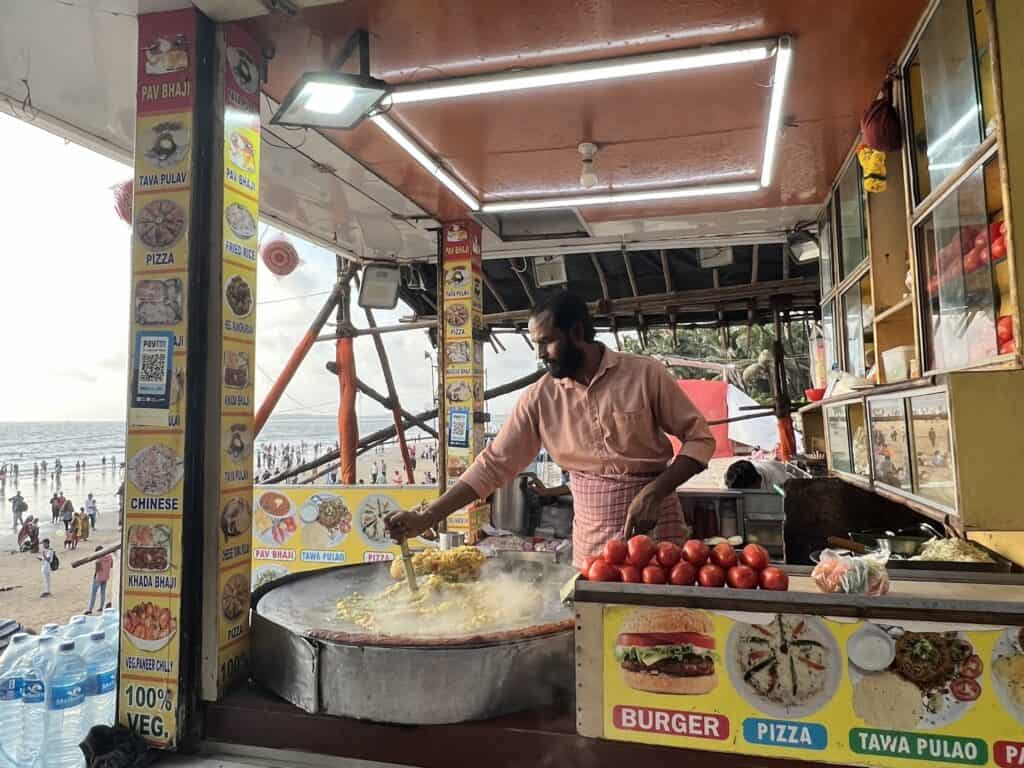
32. Walk through tea and spice plantations
India was colonized for its unique cultural heritage, which was widely known across the world through its trade in textiles, various artifacts, food, spices, tea and much more. You can also pick between many spice and tea plantation tours across places like Kerala, Assam and Darjeeling. If you fancy walking through coffee estates in the gorgeous forests of the Western Ghats, head to Coorg.
Here are a few recommended experiences across the country:
➡️ Tea, rubber and spice gardens tour in Kerala
➡️ Old Delhi Bazaar and Spice Market tour
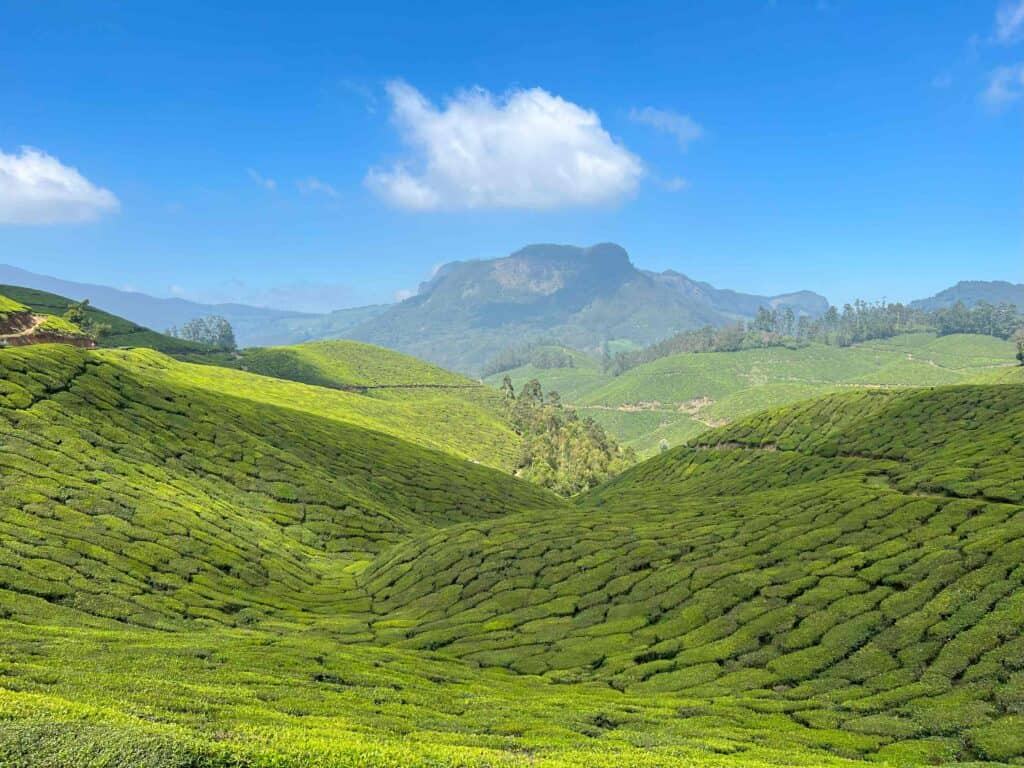
‘Everything Else’ Travel Bucket List Experiences
Some experiences in India defy categorization. These are the moments that surprise you – the unexpected adventures, chance encounters, and unique experiences that transform a simple vacation into an unforgettable journey.
33. Experience the most luxurious experiences anywhere in the world
India is a storied land of the emperors or maharajas. Even Air India’s mascot is a Maharaja! It is thus home to some of the most bucket list luxurious experiences in the world.
Some unique luxury experiences in India include The Taj Mahal Palace Hotel by the Arabian Sea in Mumbai, the Taj Lake Palace in the royalty of Udaipur, Taj Pashan Garh in the Panna National Park.
Check out our top 20 unique luxurious resorts in India to find your next dream luxury escape.
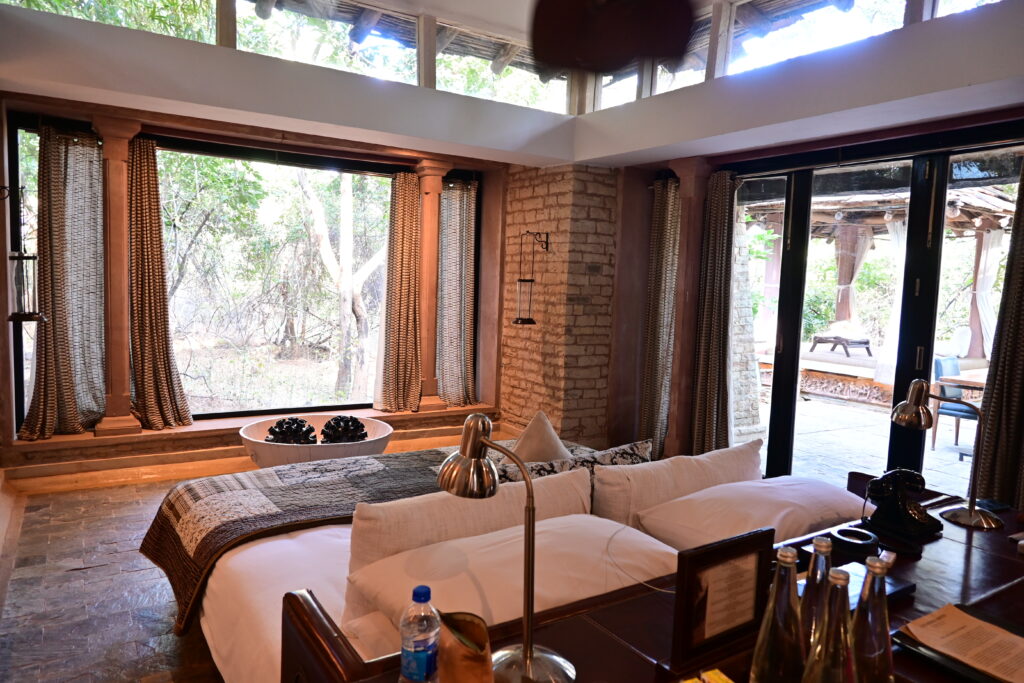
34. Experience the finest luxury money can buy on India’s luxury trains
India offers some of the most luxurious experiences on wheels money can buy. India’s luxury trains offer you unparalleled comfort and a unique way to experience India’s rich hospitality, ancient culture, biodiversity and food.
These trains are luxury hotels on wheels, offering experiences from 3 days to over a week, stopping at many major places of interest along the way, including many UNESCO world heritage sites.
For more information on luxury trains, check out our guide to luxury train travel in India.
35. Drive or ride through the highest (and most dangerous) roads in the world
The northern reaches of India and its disputed areas with China have the top 10 highest motorable roads in the world. While there is Ojos Del Salado, a volcano along the Argentinian-Chilean border is considered the highest motorable point in the world, it is not paved and needs modified vehicles.
India has many motorable roads in the high Himalayan mountain passes that are a dream for adventure motorists from all over the world. There are yearly summer motorcycle and Jeep expeditions from Delhi and Manali to Leh, which is a bucket list experience for every Indian.
Some of the highest roads you can be safe on are all in Ladakh – the Umling La Pass which is recently constructed road hailed as being the ‘top of the world’ at 19,300 ft or 5,882m.
The most popular mountain road in India and probably the world is the Khardungla Pass at about 18,000 ft or 5,300m. This was once touted as the world’s highest road, which has now been surpassed by many other new roads, gravel and paved, in the area. It still remains an iconic, bucket list experience for for any adventure traveler.
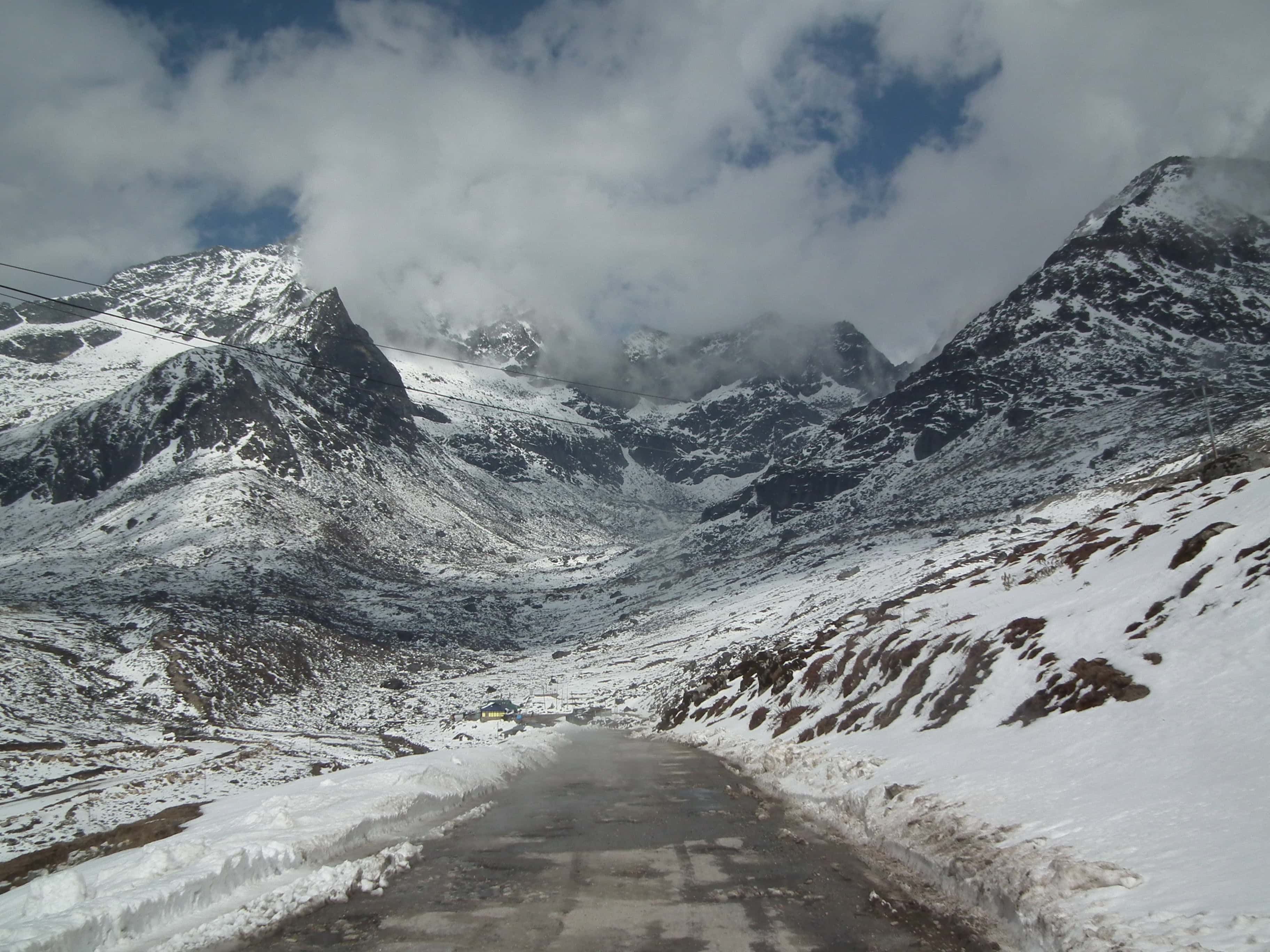
36. Experience some of the most beautiful train journeys in the world
India’s soul is captured in its train journeys. With over 68,000 kms of track, over 13,000 passenger trains and 7,000+ stations, India’s rail network is one of the largest and busiest rail networks in the world. It is ever expanding and continues to be the most affordable way to travel in the country, with services catered to every segment of traveler.
As a traveler, the mountain railways of India offer some of the most spectacular train journeys anywhere in the world. India also has some of the most luxurious trains in the world, which are a dream for any traveler.
Check out our guide to train travel in India to know everything you need to know as a tourist.
37. Shop for unique Indian handicrafts and textiles
India has always enchanted the world with exquisite products and designs that are uniquely Indian. Tourists and traders have long come to India for various handicrafts, textiles, jewelry, rugs, foods and other products that you can also buy on your visit to India.
Check out my top recommendations for shopping and souvenirs in India.
38. See the highest battlefields in the world
The Himalayan Mountains have always acted as a mighty natural barrier isolating the Indian subcontinent from the rest of Asia. However, the geopolitics of the last 100 years with the creation of 7 South Asian states and India-China tensions has meant that there are many high battlefields in India.
India is home to some of the highest battlefield in the world, the Siachen Glacier at a height of over 19,500 ft or 6000 meters. It is a strategic point that sits at the intersection of India, China and Pakistan. Good news is that you can now visit the Siachen base camp as a tourist!
In the East, en route to Tawang, you can also visit bunkers and memorials from the India-China war in Arunachal Pradesh in 1962. These can be found at 4,200m or 14,000ft along Sela Pass, one of the highest paved roads in the world. Be sure to stop by at Jaswantgarh war memorial to learn about the valor and difficulties of that war. And a free cup of tea courtesy the Indian army!

39. Visit Auroville
Auroville is an experimental township in the South Indian state of Tamil Nadu, about 150 kms South of Chennai, established in 1966 with representatives from 124 countries. It is backed by the UNESCO as a project important for the future of humanity. It serves as an experiment in a united international society where men and women from all countries can live in harmony.
Steeped in spirituality, Auroville is dominated by the golden domed Matrimandir (Mother Temple) and its surrounding gardens. The tranquility of this town is captured by the Matrimandir and this is an ideal place for meditation.
Today, Auroville has about 5,000 residents from over 50 countries with 2,500 visitors daily. It has 92 guest houses and 30 eateries making it easy for tourists to visit and enjoy its peace and tranquility. In such divisive times, Auroville reminds us of the pointlessness of such division.
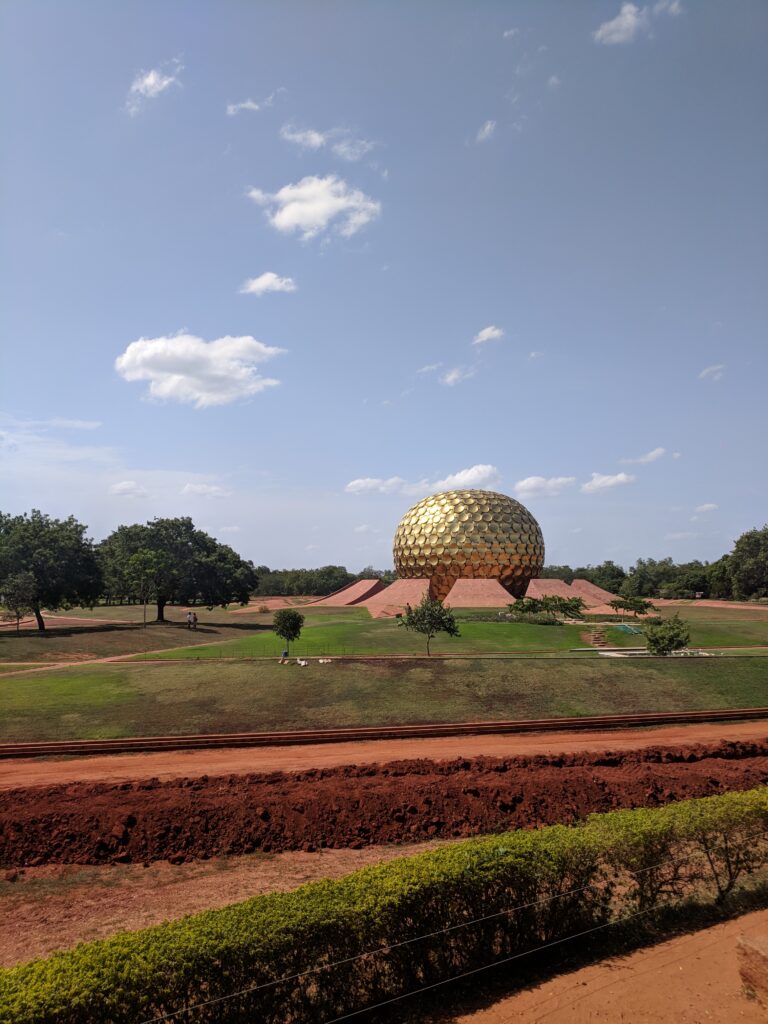
Best India Travel Resources
Planning a trip to this vast country can feel overwhelming, but the right resources make all the difference. Here are the top travel resources I use for India travel:
✅ MakeMyTrip.com: India’s largest online travel platform that makes booking domestic flights and hotels easy.
✅ IRCTC: This is the official government portal for booking train tickets in India, IRCTC is essential for anyone planning to explore India by rail as it’s the only authorized website to book Indian Railways tickets online. It allows you to check real-time seat availability, compare train routes and fares, and book tickets up to 120 days in advance.
✅ GetYourGuide: Find local guides and tours for the city you’re in. You can read reviews and ratings from other travelers to have a better idea of the experience before you book it.
✅ Download essential apps like Ola or Uber for getting around in cities, Google Maps for navigation (though always cross-reference with local advice because I have found Google Maps to be inaccurate in some places in India), and WhatsApp.
✅ Consider timing your visit to India carefully – October to March generally offers the most pleasant weather across most regions, though mountain destinations have their own seasonal sweet spots.
✅ When it comes to visas, the e-visa system has simplified the process considerably, learn more in my Ultimate Travel Guide To India Trip Planning.
✅ Check out these 20 important travel tips for first time visitors to India.
✅ For real-time travel updates and safety advisories, the Incredible India website and your country’s travel advisory service are important resources.
✅ Join Facebook groups for current, on-the-ground advice from fellow travelers. These communities often provide the most up-to-date and practical information you won’t find in guidebooks. Here is my Facebook group: India For Foreigners: Travel Tips For First Time & International Visitors.
TLDR: India Bucket List Travel Experiences
India isn’t just a destination – it’s a journey that continues long after you’ve returned home. It’s a country that can’t be “done” in a single trip, nor should it be. Whether you’re drawn to the ancient temples, the wild tigers, the mouthwatering street food, or the chaotic energy of its cities, India has a way of upending expectations.
This bucket list is just the beginning – a gateway into experiencing one of the world’s most fascinating countries. The real magic often happens in the unplanned moments: a chai shared with strangers turned friends, an impromptu invitation to a local wedding, or a wrong turn that leads to the right adventure. So keep this list as your guide, but remember to leave room for the unexpected.
The country’s ancient Sanskrit greeting, “Atithi Devo Bhava” (the guest is God), isn’t just a saying – it’s a lived philosophy that you’ll experience throughout your journey. So pack your patience, your sense of adventure, and an open mind.

